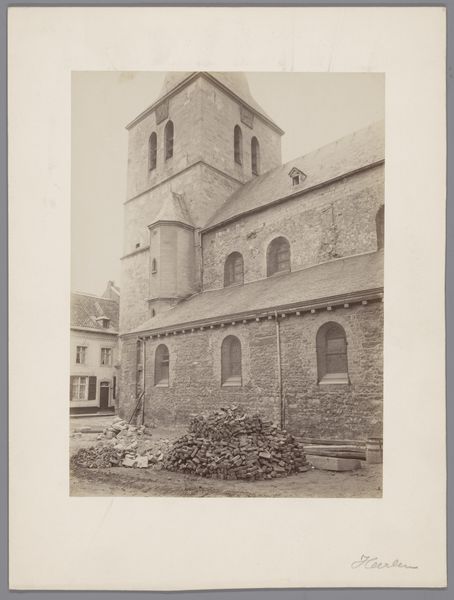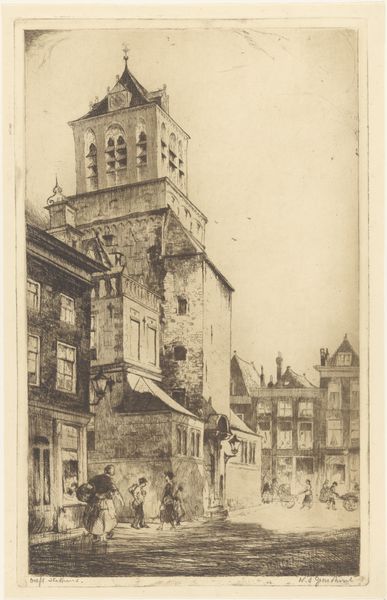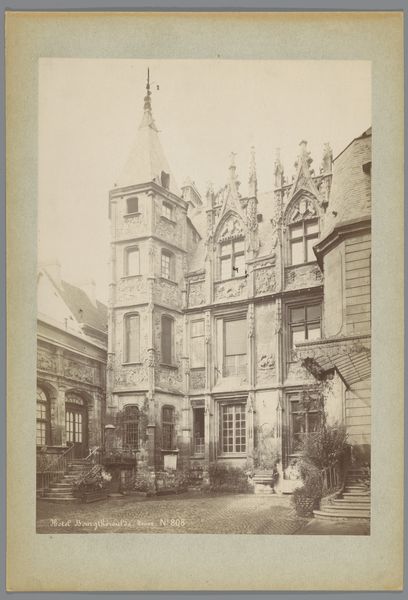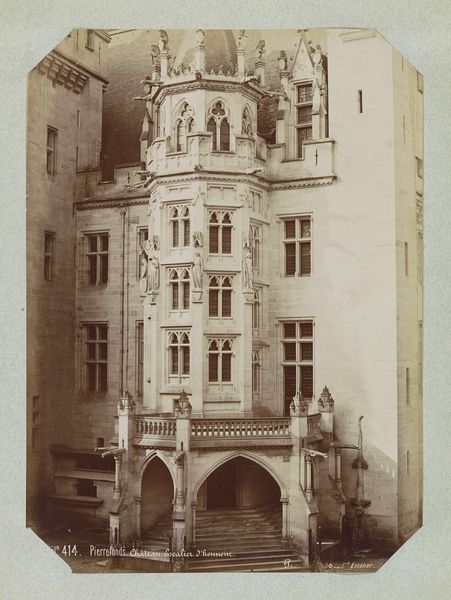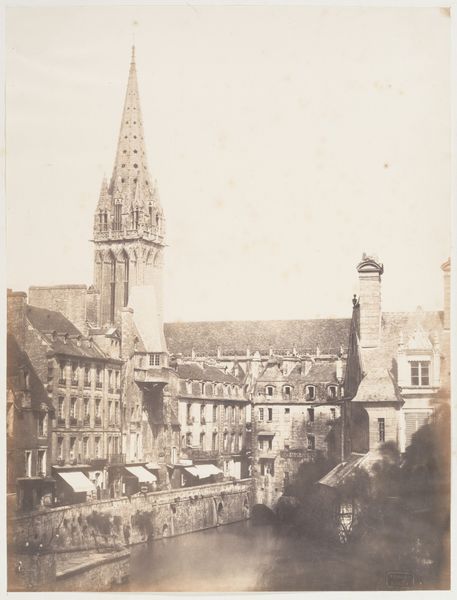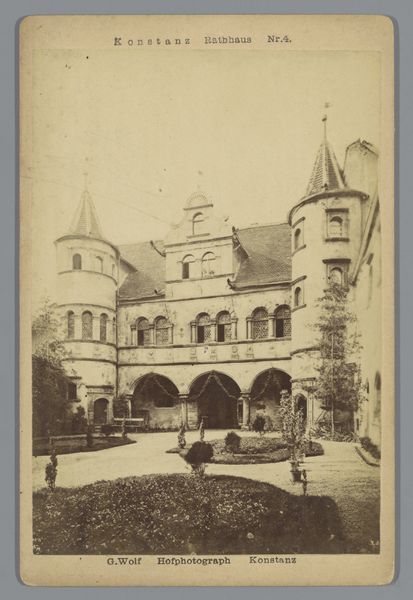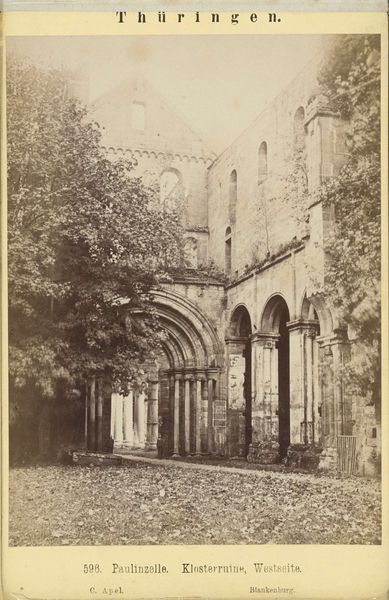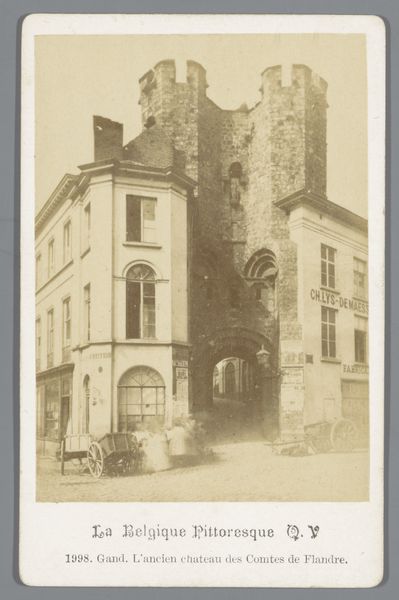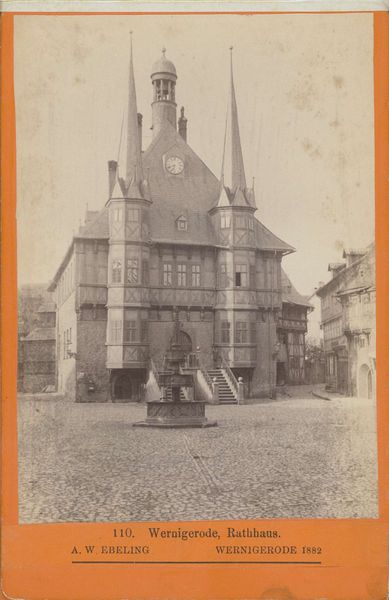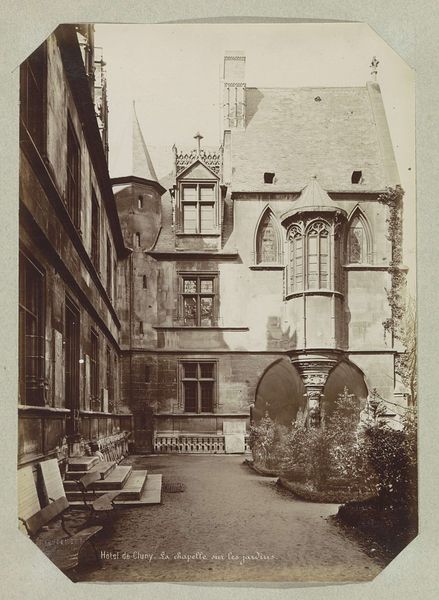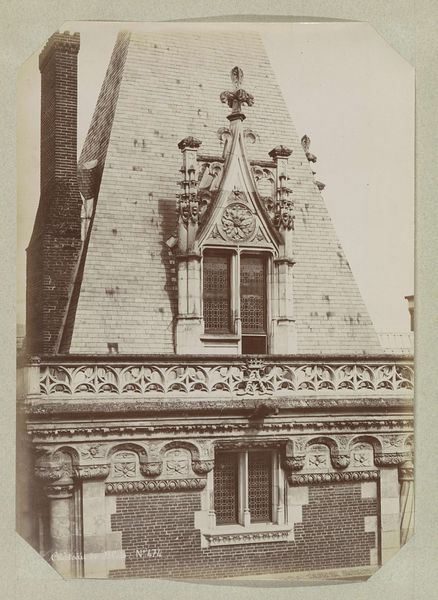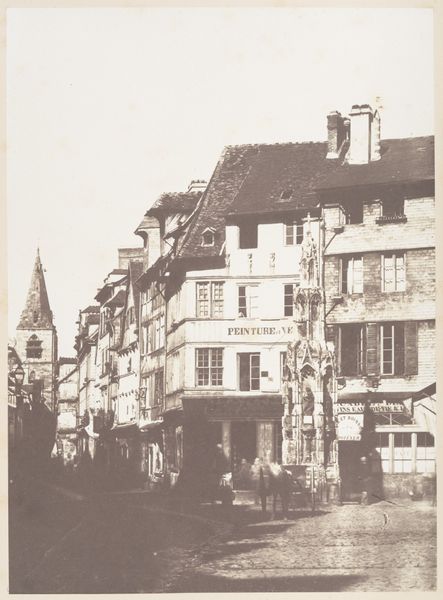
photography, architecture
#
16_19th-century
#
landscape
#
archive photography
#
photography
#
historical photography
#
19th century
#
architecture
Dimensions: height 350 mm, width 257 mm
Copyright: Rijks Museum: Open Domain
Curator: Before us we have "Trappenhuis en toren van het kasteel van Blois," or "Staircase and Tower of the Château de Blois," a photograph taken by Mèdéric Mieusement, sometime between 1880 and 1900. Editor: The sepia tones lend the whole composition a melancholic feel. The photograph feels less like a record and more like a staged theatrical backdrop with its interplay of light and shadow on the textured stone. Curator: This photograph invites us to consider the legacy of power and privilege embedded within architectural spaces. Blois, a former royal residence, was once the stage for immense political maneuvering. What stories do you imagine this architecture has silently witnessed? Editor: My eye is drawn to the receding diagonals of the staircase—the meticulous detail of each balustrade segment contributing to a layered and highly formal construction. The geometric precision offers a certain pleasure. Curator: Looking at Mieusement’s approach, I wonder what were his choices of perspective to frame this monumental architecture? How does the very act of documenting architecture intersect with the cultural values being impressed? Editor: Consider the textural contrast—smooth versus rough stone, for example. The gargoyles offer a counterpoint to the symmetry; their presence almost destabilizes the rigidity, no? Curator: Absolutely, this tension points to the larger themes in the history of France—a society striving for order, beauty and reason but grappling with social turmoil and revolution. The photo stands as a document to lost empires. Editor: Well, whatever socio-historical weight it bears, I admire how the photographer creates a complex interplay of shape and shade within a flattened picture plane. Curator: Examining photographs like these can unveil suppressed dialogues concerning heritage, colonization, and collective identity. It’s critical to reflect critically and ask probing questions about its significance. Editor: Perhaps, in its stillness, it captures the frozen architecture as pure design divorced from its social meanings—an autonomous form communicating solely through visual elements. Curator: Interesting. It seems we’ve found our points of connection and divergence on its function. Editor: Indeed. It’s this discourse around its layers that ultimately provides enriching insight.
Comments
No comments
Be the first to comment and join the conversation on the ultimate creative platform.
